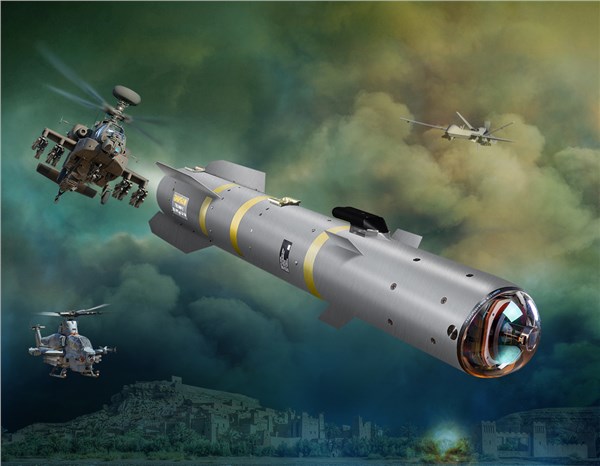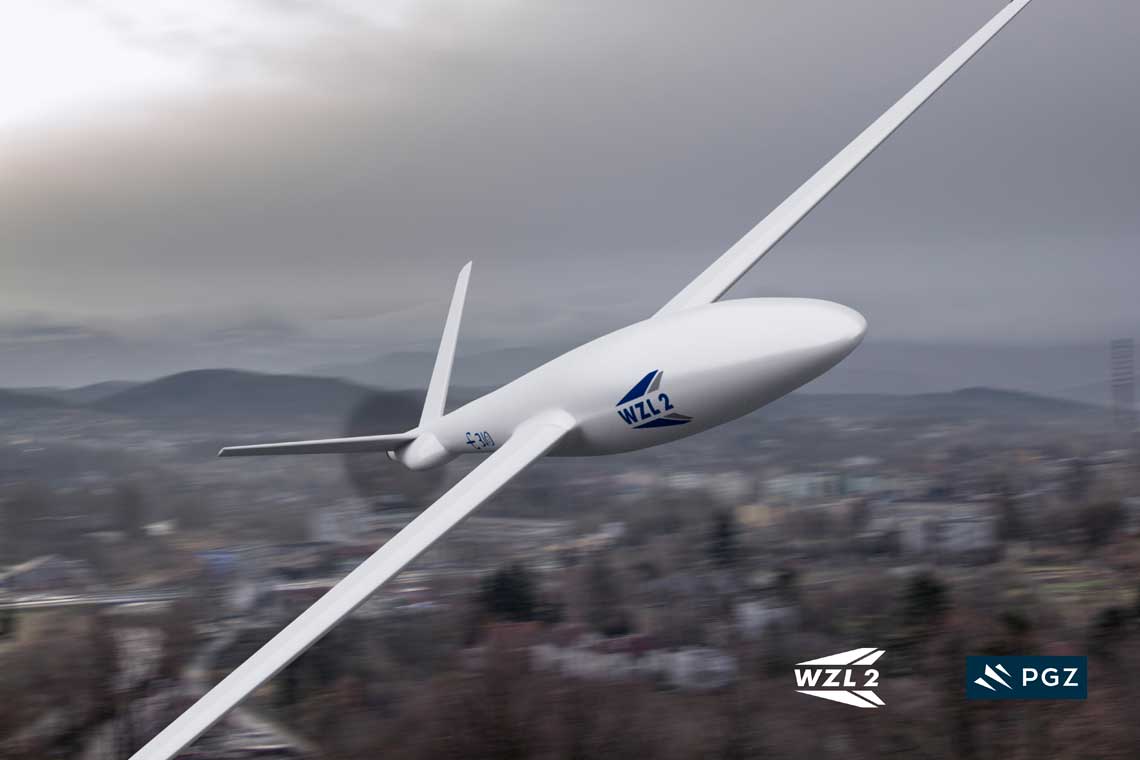
Lockheed Martin JAGM
Content

An AH-1Z Viper gunship launches an AGM-114R Hellfire II missile during testing on June 24, 2004. Photos Lockheed Martin
In June of this year, Lockheed Martin received permission to begin small-scale production of JAGM air-to-ground guided missiles. In the coming years, JAGM missiles will successively replace the BGM-71 TOW, AGM-114 Hellfire II and AGM-65 Maverick missiles.
In the early 114s, the Pentagon first announced a plan to replace the AGM-65 Hellfire and AGM-169 Maverick guided missiles with a single, versatile missile. The construction program of the so-called. AGM-2007 JCM (Joint Common Missile). After a few years, the ambitious program stalled. In XNUMX, it was launched again, this time under the name "Joint Air-to-Ground Missile" - JAGM (Joint Air-to Ground Missile). At the same time, the US Army began a program to create a new version of the Hellfire missile, designated the Hellfire II. The Hellfire II missile, released in six modifications, turned out to be a very successful design.
The history of the Hellfire guided missile dates back to the mid-seventies of the last century. The US Army then began a program to create a semi-active laser-guided air-to-ground missile for attack helicopters designed to destroy tanks, armored vehicles and fortifications. The program has the abbreviation HELLFIRE (HELicopter Launched FIRE and forget - “helicopters fired and forgot”), which after many years became the name of the rocket - Hellfire. The missile, designated AGM-114A, was developed by Rockwell International, which in 1982 received a contract for their mass production.
AGM-114A Hellfire missiles entered service in 1985 and were used on AH-64A Apache and AH-1W SuperCobra helicopters. Subsequently, OH-58D, MH-60K and L helicopters, as well as SH-60B, HH-60H, MH-60R and S marine helicopters were adapted for their transportation. The missiles were carried by Marvin M272 four-rail launchers. (later: Lockheed Martin/Marvin M299 and M310), thanks to which one helicopter could be armed with up to 16 Hellfire missiles. On December 20, 1989, the Hellfire was first used in combat by AH-64A Apache helicopters during Operation Just Cause in Panama. The extremely successful use of missiles during Operation Desert Storm in January 1991 undoubtedly contributed to their exhilarating international career. Today they are in 28 countries.
Hellfire Missile I
The Hellfire guided missile was designed as a modular system (HMMS - Hellfire Modular Missile System), so it can be relatively easily modified by replacing individual elements. The missile consists of four main modules: a homing head, a combat charge (warhead), a control compartment and an engine compartment (engine).
The first generation missiles (Hellfire I) were built in four main modifications: AGM-114A, AGM-114B, AGM-114C and AGM-114F. A ground version was also created, designated AGM-114A GLH-L (Ground Launched Hellfire-Light), firing from vehicle-mounted tubular launchers. The ground version of the AGM-114A missile, designated RBS-17, has been ordered by Sweden. These missiles are launched from portable rail launchers mounted on folding tripods. RBS-17s are armed with high-explosive fragmentation charges.
AGM-114A has a length of 1,63 m, a fuselage diameter of 0,177 m (fin span 0,71 m) and weighs 45 kg. Its maximum range is 8 km. The warhead is a copper-shaped conical shaped charge (HEAT - High Explosive Anti-Tank) weighing eight kilograms. The projectile has semi-active laser targeting. The target must be illuminated by a laser beam from an external source (helicopter or ground operators). The Thiokol TX-657 solid rocket engine is used as a power plant. The engine creates an initial acceleration of g + 10 and can accelerate the projectile to a maximum speed of 1520 km / h.
AGM-114B and AGM-114C have the same dimensions and specifications as AGM-114A. The AGM-114B is an AGM-114A missile equipped with a non-smoking M120E1 engine, while the C version is an AGM-114A with a Safe/Arming Device (SAD) electronic module. This version was developed for the Navy (US Navy) in accordance with their safety requirements for weapons used on board ships.
The AGM-114F version is the so-called. intermediate version. The missile is armed with a two-stage HEAT system capable of penetrating vehicle armor reinforced with older types of reactive armor (ERA - Explosive Reactive Armor and SLERA - Self-Limiting Explosive Reactive Armor). However, data on penetration capabilities are classified. The warhead weighs 9 kg. The AGM-114F missile is longer than the A/B/C version - its length is 1,80 m, and it is heavier - its weight is 48,5 kg. Its effective range is less and is about 7 km.
Rocket Hellfire II
In the early nineties of the last century, the second generation of Hellfire missiles was developed, designated Hellfire II. There were six main variants, designated as: AGM-114K, AGM-114L, AGM-114P, AGM-114M, AGM-114N and AGM-114R.
The first of the Hellfire II family, the AGM-114K missile was built on the basis of the AGM-114F. However, it is shorter (1,63 m) and lighter (45,4 kg) and has a range of 8 km. AGM-114K is armed with a two-stage shaped charge. Guidance is semi-active on the laser, but its optoelectronic devices are more resistant to interference. It also has a digital autopilot that allows you to maintain the direction of flight even if the laser signal is fading or interrupted. AGM-114K is standardly equipped with a new, electronic version of the arming / protection module (ESAF - Electronic Safe, Arm, Fire). On the basis of the AGM-114K, a variant was also created, which received the designation AGM-114K-2A. The missile has a cumulative high-explosive warhead (the cumulative charge is in a metal "sleeve"). Allows you to more effectively destroy lightly armored or unarmored vehicles and fortifications in open areas.
The AGM-114L Longbow Hellfire is a version of the AGM-114K designed specifically for the AH-64D Apache Longbow helicopters. The rocket has a length of 1,76 m and weighs 49 kg. It is the first Hellfire missile to operate in fire-and-forget mode and in all weather conditions. It is equipped with an active millimeter-wave homing (MMW) radar, and an inertial unit is used in the missile control system. After launch, the missile is aimed at the target using the radiation of its homing head. At this stage, there is no need to escort the target by helicopter. The use of radar also makes it possible to effectively track a target hidden by smoke, fog or dust. Under such conditions, illumination of the target with a laser beam is ineffective due to scattering or refraction of the beam. The AGM-114L missile is armed with a two-stage shaped charge. The AGM-114L reached initial combat readiness in 2000.
The AGM-114M missile was developed by order of the US Navy (US Navy). Built on the basis of the AGM-114K, the rocket has a length of 1,63 m, a mass of 48,2 kg and has an incendiary fragmentation warhead (HEI - High-Explosive Incendiary). It is used to destroy boats and lightly armored ships, as well as the so-called. light targets found in built-up areas. These missiles were also put into service in 2000.
The AGM-114N missile was also created on the basis of the AGM-114K and has the same dimensions and weight as the AGM-114M. This is a variant with thermobaric (fuel-air) pressure. The cumulative warhead has a metal shell that burns strongly during detonation (MAC - Metal Augmented Charge). Its explosion can "suck" the air out of buildings, bunkers or caves. In open ground, it is characterized by a large radius of destruction, which is why it is ideal for destroying the so-called. soft targets.
The AGM-114P version, on the other hand, is a version of the AGM-114K that was designed specifically for drones. It can be launched from high altitudes (where drones usually operate) and has increased resistance to atmospheric phenomena (wind, temperature changes). When launched, it can change its flight path up to 180 degrees, making it easier to use by drones, which are less maneuverable than helicopters.
